Too many rookie screenwriters start out with “million-dollar” ideas and big-budget concepts, but with only vague notions on their characters. Unless you're writing a biopic or something “Based on a True Story”, you need to spend time getting to know your characters. A major part of that process is choosing names for your characters.
Expectant parents often research, debate and argue over their child's name for months before its birth. Shouldn't you spend as much time thinking about how to name your “babies” in your script?
Character Name Generator
A fun place to start is the “Character Name Generator”. This site gives you a form to select your character's gender, ethnicity and birth decade. The page generates a name, personality type and random psychological profile according to the Minnesota Multiphasic Personality Inventory (MMPI). While the data here may not fit your initial ideas for your character, it does provide a useful starting point.
First Names
Keep in mind that your character's parents choose their child's name for specific reasons. Also remember that your character may choose to use a different form of his or her given name, while showing discomfort at other forms. The stuffy aristocrat named “Arthur” may flinch at being called “Art” or “Artie”. Each form of a given name can also reflect an aspect of your character's personality. For instance,“Richard” is all business, but “Richie” is the life of the party, and “Rick” is a hit with the ladies.
Nicknames
Just as your character doesn't choose his given name, he also should not get to choose his nickname. Nicknames can come from a wide range of sources, some welcome and some less so. The character's reaction to their nickname can reveal aspects of that character to the audience. One famous example shows how Henry Jones, Jr., had a stronger childhood bond with the family dog than he did with his absentee father, so he took the dog's name as his own: Indiana.
Family Names
A character's family name can also reveal facets of his personality, as family names often contain aspects of that family's history. A working-class family may have a name that suggests hard work, such as Baker, Carter, or Miller. Names taken from British cities and counties can suggest an upper-class background, such as Essex, Somerset, or Warrington. A family name tied to an identifiable ethnic group or nationality can give your character a historical and traditional background that can serve as either a place of comfort or a source of conflict.
Names as Shorthand
As unfortunate as it sounds, readers, producers, and agents will make snap judgments about your characters based on their names. If you choose to name your ass-kicking action hero “Myron Kaufmann” and your cowardly accountant “Ace Hardcastle”, you'll have a harder time selling your script. Think about the first impression that your character's name gives to an audience, then you can choose either to go with that expectation or cut across the grain for more impact.
About Story Into Screenplay
Story Into Screenplay offers one-on-one consulting, either in person at our Houston location or through online sessions. We can work with you in developing your story structure and finding the unique facets that can turn your idea into a script that grabs the attention of agents, producers and directors.
Contact us at StoryIntoScreenplayBlog [at] gmail [dot] com for more information. You can also check out out us on Facebook, follow us on Twitter and watch videos on our YouTube channel.
Monday, December 1, 2014
Sunday, November 23, 2014
John Truby on the Importance of Screenplay Structure
When it comes to story structure, no one has a better grasp on the concept than legendary screenwriting teacher John Truby. His best-selling book, The Anatomy of Story, is one of the essential books in any aspiring screenwriter's library. Truby has worked as a script consultant on hundreds of projects and his screenwriting classes routinely sell out.
In a recent teleconference sponsored by the International Screenwriters' Association, Truby shared some of his ideas on story structure and how its uses can benefit writers without confining their creativity.
Premise vs. Story
Truby remarked that one of the habits of rookie writers is their tendency to go straight from dreaming up their premise to writing up script pages. After the initial surge of inspiration wears off, these writers find themselves stuck with a few pages, but no coherent story.
“They get 15 to 20 pages into their script, then they hit a brick wall,” Truby said. “This is largely because they didn't do their structure homework. In order to tell a story that can last for 90 to 100 minutes, you must have a strong structural foundation.”
Dancing to the Beats
While most newbie screenwriters have read about the classic “three-act structure”, this format often does not provide the writer with enough guidance to see the story through from beginning to end. Professional screenwriters are also acutely aware of story “beats”. A story beat defines the turning points that occur in most narratives.
Some screenplay structures, such as Blake Snyder's Beat Sheet and Jacob Kruger's Seven-Act Structure, offer one-size-fits-all approaches to developing story beats. Truby's lessons not only provide a useful structure for all types of stories, but he also delves into the story beats unique to specific genres.
Doing the Twist
At this point, you may ask, “If every story uses the same structure, how do I make my story stand out?” As with any creative endeavor, you must first learn the rules before you can understand the most effective way to break them. The difference lies in your ability to adapt the story beats to your own purposes.
“Professional writers,” Truby remarked, “find that good structure shows you which creative leaps work and which ones are outside the scope of the story.”
Know Your Outcome
How many times have you left the house, turned on your car, and started driving down the road, with absolutely no idea where you were going or how you would get there? For your sake (and mine and everyone else's on the road), the answer should be, “Never!”
How many times have you sat at your computer, opened your screenwriting software and started writing down words, with absolutely no idea where your story was going or how you would finish it? For many rookie writers, the answer is, “All the time!”
“You can't hit the target unless you see the bull's eye,” Truby said in his recent Q&A session. “You have to know your ending first. All events in that script must lead to that ending.”
For more information on John Truby's classes, visit the John Truby Master Class site. You can also pick up The Anatomy of Story at Amazon, Barnes and Noble, and The Writers Store.
While Truby's classes are among the best in the industry, many writers benefit more from a more individualized approach. Story Into Screenplay offers one-on-one consulting, either in person at our Houston location or through online sessions.
We can work with you in developing your story structure and finding the unique facets that can turn your idea into a script that grabs the attention of agents, producers and directors. Contact us at StoryIntoScreenplayBlog [at] gmail [dot] com for more information. You can also check out out us on Facebook, follow us on Twitter and watch videos on our YouTube channel.
In a recent teleconference sponsored by the International Screenwriters' Association, Truby shared some of his ideas on story structure and how its uses can benefit writers without confining their creativity.
Premise vs. Story
Truby remarked that one of the habits of rookie writers is their tendency to go straight from dreaming up their premise to writing up script pages. After the initial surge of inspiration wears off, these writers find themselves stuck with a few pages, but no coherent story.
“They get 15 to 20 pages into their script, then they hit a brick wall,” Truby said. “This is largely because they didn't do their structure homework. In order to tell a story that can last for 90 to 100 minutes, you must have a strong structural foundation.”
Dancing to the Beats
While most newbie screenwriters have read about the classic “three-act structure”, this format often does not provide the writer with enough guidance to see the story through from beginning to end. Professional screenwriters are also acutely aware of story “beats”. A story beat defines the turning points that occur in most narratives.
Some screenplay structures, such as Blake Snyder's Beat Sheet and Jacob Kruger's Seven-Act Structure, offer one-size-fits-all approaches to developing story beats. Truby's lessons not only provide a useful structure for all types of stories, but he also delves into the story beats unique to specific genres.
Doing the Twist
At this point, you may ask, “If every story uses the same structure, how do I make my story stand out?” As with any creative endeavor, you must first learn the rules before you can understand the most effective way to break them. The difference lies in your ability to adapt the story beats to your own purposes.
“Professional writers,” Truby remarked, “find that good structure shows you which creative leaps work and which ones are outside the scope of the story.”
Know Your Outcome
How many times have you left the house, turned on your car, and started driving down the road, with absolutely no idea where you were going or how you would get there? For your sake (and mine and everyone else's on the road), the answer should be, “Never!”
How many times have you sat at your computer, opened your screenwriting software and started writing down words, with absolutely no idea where your story was going or how you would finish it? For many rookie writers, the answer is, “All the time!”
“You can't hit the target unless you see the bull's eye,” Truby said in his recent Q&A session. “You have to know your ending first. All events in that script must lead to that ending.”
For more information on John Truby's classes, visit the John Truby Master Class site. You can also pick up The Anatomy of Story at Amazon, Barnes and Noble, and The Writers Store.
While Truby's classes are among the best in the industry, many writers benefit more from a more individualized approach. Story Into Screenplay offers one-on-one consulting, either in person at our Houston location or through online sessions.
We can work with you in developing your story structure and finding the unique facets that can turn your idea into a script that grabs the attention of agents, producers and directors. Contact us at StoryIntoScreenplayBlog [at] gmail [dot] com for more information. You can also check out out us on Facebook, follow us on Twitter and watch videos on our YouTube channel.
Wednesday, October 29, 2014
Dear "Producers": Pay Your "Fare" Share
A cab driver picks up a man in a suit.
The man gives the driver the address of a large downtown office building.
The cab driver asks his passenger if he has business downtown.
The passenger tells him that he's going in for a big job interview.
When they arrive, the cab driver asks for his fare.
The passenger says that he doesn't have the money to pay the cab driver now, but he promises the driver a share of his salary if he lands the job.
If you're the cab driver, what do you do?
Would you hire a cab driver if you didn't have the money to pay the fare?
Then why would you ask a screenwriter to create your script on nothing but empty promises?
Think about it.
The man gives the driver the address of a large downtown office building.
The cab driver asks his passenger if he has business downtown.
The passenger tells him that he's going in for a big job interview.
When they arrive, the cab driver asks for his fare.
The passenger says that he doesn't have the money to pay the cab driver now, but he promises the driver a share of his salary if he lands the job.
If you're the cab driver, what do you do?
Would you hire a cab driver if you didn't have the money to pay the fare?
Then why would you ask a screenwriter to create your script on nothing but empty promises?
Think about it.
Sunday, October 26, 2014
Straight A's: 5 Ways How Strong Characters Can Launch Your Screenwriting Career
If you've read through some of the previous entries here, you'll know that I'm a big believer in the idea that strong characters form the basis for a high-quality script. Regardless of your genre, plot, theme, or setting, the measure of your ability as a screenwriter comes from how well you can create memorable characters. When you create a script that has powerful characters who overcome tremendous obstacles while pursuing meaningful goals, you'll earn a lot more than straight “A”s in your next screenwriting class.
Awards
One important way for you to get attention for your script is to win awards from screenwriting contests. Industry professionals are always looking for the best available scripts, and screenplay contests are valuable resources for agents, producers and directors who are looking for top-notch writers. Your ability to develop multi-dimensional characters can mean the difference between a script the contest judges can't stop reading and one they can't stop reading fast enough.
Agents
Contrary to the popular belief among many new screenwriters, an agent's job is less about nurturing you as an artist and more about selling your talents as a product. A major reason that new screenwriters don't land an agent is that an agent needs a quality product to show off the writer's skills. When you create characters that compel readers to turn the page to see what happens to them next, you've made a product that agents will find irresistible and will give their utmost efforts to sell to producers.
Angel Investors
An “angel investor” provides the start-up capital for a new business in exchange for a portion of the equity. These investors often look for high-risk, high-reward opportunities. While the practice of angel investment started with Broadway plays nearly a century ago, independent films have also attracted their share of angel investors. A script with strong characters can attract angel investors, as many of these investors will often see the characters as reflections of their own adventurous personalities.
Actors
Actors are constantly seeking out that star-making role, whether they're new to Hollywood, on the comeback trail, or looking to break the chains of typecasting. Why did Matthew McConaughey, star of such rom-com bombs as Failure to Launch, Ghosts of Girlfriends Past, and The Wedding Planner, accept a “minuscule” paycheck of $200,000 for the lead role in Dallas Buyers Club? In an interview with The Hollywood Reporter, he said that he “got (his) self-satisfaction” from the role. If your characters can give A-list actors the “self-satisfaction” they're looking for in a role, your success is all but assured.
Audiences
If you ask an audience what a movie is about, you probably won't get answers like, “love conquers all” or “war is hell” or “conformity is a prison.” You're more likely to get answers like, “it's about a washed-up boxer who gets a shot at the title” or “it's about a girl who fights her oppressive government with a bow and arrow” or “it's about a woman who fights back against her abusive husband.” Audiences don't pay to see messages or themes or platitudes. They pay to see characters. Make them want to pay to see yours.
If you want to write a script that will earn you these “A”s, contact us at StoryIntoScreenplayBlog [at] gmail [dot] com. We can work with you in building your characters, developing your story ideas, and fleshing out your concepts through in-person and online consultations tailored to your needs. Check us out on Facebook, follow us on Twitter and check out our YouTube channel.
Awards
One important way for you to get attention for your script is to win awards from screenwriting contests. Industry professionals are always looking for the best available scripts, and screenplay contests are valuable resources for agents, producers and directors who are looking for top-notch writers. Your ability to develop multi-dimensional characters can mean the difference between a script the contest judges can't stop reading and one they can't stop reading fast enough.
Agents
Contrary to the popular belief among many new screenwriters, an agent's job is less about nurturing you as an artist and more about selling your talents as a product. A major reason that new screenwriters don't land an agent is that an agent needs a quality product to show off the writer's skills. When you create characters that compel readers to turn the page to see what happens to them next, you've made a product that agents will find irresistible and will give their utmost efforts to sell to producers.
Angel Investors
An “angel investor” provides the start-up capital for a new business in exchange for a portion of the equity. These investors often look for high-risk, high-reward opportunities. While the practice of angel investment started with Broadway plays nearly a century ago, independent films have also attracted their share of angel investors. A script with strong characters can attract angel investors, as many of these investors will often see the characters as reflections of their own adventurous personalities.
Actors
Actors are constantly seeking out that star-making role, whether they're new to Hollywood, on the comeback trail, or looking to break the chains of typecasting. Why did Matthew McConaughey, star of such rom-com bombs as Failure to Launch, Ghosts of Girlfriends Past, and The Wedding Planner, accept a “minuscule” paycheck of $200,000 for the lead role in Dallas Buyers Club? In an interview with The Hollywood Reporter, he said that he “got (his) self-satisfaction” from the role. If your characters can give A-list actors the “self-satisfaction” they're looking for in a role, your success is all but assured.
Audiences
If you ask an audience what a movie is about, you probably won't get answers like, “love conquers all” or “war is hell” or “conformity is a prison.” You're more likely to get answers like, “it's about a washed-up boxer who gets a shot at the title” or “it's about a girl who fights her oppressive government with a bow and arrow” or “it's about a woman who fights back against her abusive husband.” Audiences don't pay to see messages or themes or platitudes. They pay to see characters. Make them want to pay to see yours.
If you want to write a script that will earn you these “A”s, contact us at StoryIntoScreenplayBlog [at] gmail [dot] com. We can work with you in building your characters, developing your story ideas, and fleshing out your concepts through in-person and online consultations tailored to your needs. Check us out on Facebook, follow us on Twitter and check out our YouTube channel.
Sunday, October 12, 2014
Why Do We Write Screenplays?
If you're reading this, you must have an interest in screenwriting. You could be an aspiring writer who's never written a script, or an experienced writer with several films under your belt. You could be a director looking for a writer to develop your ideas, or you're a producer who's looking for a writer to create a product you can sell to investors. You might be an actor looking for insights into how scripts are created, or just a film fan who wants a deeper understanding of the screenwriting process.
In any case, you may have contemplated the question of “why do writers write screenplays?” Out of all the possible creative endeavors, why do writers choose to sit in front a screen, open up our word processing software, and bash our heads into the keyboards until our brains spill out? Why do screenwriters choose to isolate ourselves from friends, family and fun, only to write out words that very few people will ever read? The reasons for such self-inflicted torture can be as varied as the scripts sitting on the shelves of the hundreds of Hollywood production offices, but most of them boil down to a select few.
“I want to be rich and/or famous!”
If you chose to get into screenwriting to be seen on red carpets, trade jokes with Jimmy Fallon, and get the VIP treatment at the hottest clubs, you're barking up the wrong tree. Unlike the world of live theatre, in which the playwright is royalty, the film industry ranks screenwriters below directors, producers, actors, crew members, craft service workers and janitors. Also, for those of you who think your “million-dollar idea” for a script will be your ticket to a Beverly Hills address, go back to the first entry of this blog to quickly disabuse yourself of that notion.
“I want to tell the world that ...”
On the opposite end of the spectrum from the “fame-seeking” writer is the “message” writer. If the intentions behind your script are to deliver a message that will change the world, take the advice of the late, great producer Samuel L. Goldwyn: “If you want to send a message, call Western Union.” Save your deep philosophical musings on the nature of life, love and loss for your fanfic novel or, better yet, a bumper sticker. At least no one has to sit through reading a long, boring, self-indulgent bumper sticker.
“I want to tell a story no one has heard before.”
I got three words for you: No. Such. Thing. In his book The Seven Basic Plots, Christopher Booker holds that there are as few as seven unique stories in all of literature. In Save The Cat, Blake Snyder narrows it down to ten, including “Monster In The House” and “Dude With A Problem”. Since you can't tell a unique story, you have to know how to tell an old story in a unique way. That's why you'll often need a script consultant to help you shape your concept into a story that has blends the familiar elements with your unique voice.
“I want to provoke an emotional response from the audience.”
If you're writing a comedy, you envision the audience howling with laughter. If your script is an action-packed shoot-em-up, you dream of the audience cheering the Hero when he vanquishes the Big Bad. If horror is your genre, you want to see the ticket-buyers scream, jump, and cover their eyes at the frightening images your writing has conjured before their eyes.
BINGO! Now you're getting somewhere! The reason we write for the screen is to sit in the back of the darkened theater, watch the audience, and know we're taking them on a ride through our sick and twisted imaginations. Novelists get more praise as “writers”, but they don't get the immediate feedback from the reader. Directors get awards for bringing the images to life, but those images had to come from our fevered minds. Actors get the red carpet treatment for their performances, but they'd still be waiting tables without our scripts.
So, dear fellow screenwriter, the next time you sit down at your favorite writing spot and ask yourself, “Why am I doing this?”, remember that audience. They're waiting for your script to make them laugh, cry, cheer, boo, and take them on an emotional ride.
If you want to create a script that tug at the emotions of producers, directors, and agents, get in touch with us at StoryIntoScreenplayBlog [at] gmail [dot] com. We work with new and experienced screenwriters in developing their characters, story ideas, and concepts through in-person and online consultations tailored to your needs. Check out out us on Facebook, follow us on Twitter and check out our YouTube channel.
In any case, you may have contemplated the question of “why do writers write screenplays?” Out of all the possible creative endeavors, why do writers choose to sit in front a screen, open up our word processing software, and bash our heads into the keyboards until our brains spill out? Why do screenwriters choose to isolate ourselves from friends, family and fun, only to write out words that very few people will ever read? The reasons for such self-inflicted torture can be as varied as the scripts sitting on the shelves of the hundreds of Hollywood production offices, but most of them boil down to a select few.
“I want to be rich and/or famous!”
If you chose to get into screenwriting to be seen on red carpets, trade jokes with Jimmy Fallon, and get the VIP treatment at the hottest clubs, you're barking up the wrong tree. Unlike the world of live theatre, in which the playwright is royalty, the film industry ranks screenwriters below directors, producers, actors, crew members, craft service workers and janitors. Also, for those of you who think your “million-dollar idea” for a script will be your ticket to a Beverly Hills address, go back to the first entry of this blog to quickly disabuse yourself of that notion.
“I want to tell the world that ...”
On the opposite end of the spectrum from the “fame-seeking” writer is the “message” writer. If the intentions behind your script are to deliver a message that will change the world, take the advice of the late, great producer Samuel L. Goldwyn: “If you want to send a message, call Western Union.” Save your deep philosophical musings on the nature of life, love and loss for your fanfic novel or, better yet, a bumper sticker. At least no one has to sit through reading a long, boring, self-indulgent bumper sticker.
“I want to tell a story no one has heard before.”
I got three words for you: No. Such. Thing. In his book The Seven Basic Plots, Christopher Booker holds that there are as few as seven unique stories in all of literature. In Save The Cat, Blake Snyder narrows it down to ten, including “Monster In The House” and “Dude With A Problem”. Since you can't tell a unique story, you have to know how to tell an old story in a unique way. That's why you'll often need a script consultant to help you shape your concept into a story that has blends the familiar elements with your unique voice.
“I want to provoke an emotional response from the audience.”
If you're writing a comedy, you envision the audience howling with laughter. If your script is an action-packed shoot-em-up, you dream of the audience cheering the Hero when he vanquishes the Big Bad. If horror is your genre, you want to see the ticket-buyers scream, jump, and cover their eyes at the frightening images your writing has conjured before their eyes.
BINGO! Now you're getting somewhere! The reason we write for the screen is to sit in the back of the darkened theater, watch the audience, and know we're taking them on a ride through our sick and twisted imaginations. Novelists get more praise as “writers”, but they don't get the immediate feedback from the reader. Directors get awards for bringing the images to life, but those images had to come from our fevered minds. Actors get the red carpet treatment for their performances, but they'd still be waiting tables without our scripts.
So, dear fellow screenwriter, the next time you sit down at your favorite writing spot and ask yourself, “Why am I doing this?”, remember that audience. They're waiting for your script to make them laugh, cry, cheer, boo, and take them on an emotional ride.
If you want to create a script that tug at the emotions of producers, directors, and agents, get in touch with us at StoryIntoScreenplayBlog [at] gmail [dot] com. We work with new and experienced screenwriters in developing their characters, story ideas, and concepts through in-person and online consultations tailored to your needs. Check out out us on Facebook, follow us on Twitter and check out our YouTube channel.
Sunday, September 21, 2014
5 Reasons Why Screenwriters Need to Know Their Character's Favorite Food
One of the tools I use, in both my own writing and as a tool with my clients, comes from the wonderful book, The Screenplay Workbook. This book uses a two-page “Character Development Worksheet” to help readers flesh out their characters. In addition to filling out details on the character's physical description, family history and educational level, the worksheet includes lines such as “Favorite Place to Visit”, “Favorite Movie/Book”, and “Favorite Food”.
 While assigning favorite foods to your characters may seem like a trivial exercise, the most useful aspect of these worksheets comes with the question that follows: Why?
While assigning favorite foods to your characters may seem like a trivial exercise, the most useful aspect of these worksheets comes with the question that follows: Why? - Why does your main character prefer cheesecake over chocolate?
- Why does your antagonist love Big Macs but hate filet mignon?
- Why does your love interest believe that broccoli is the Food of the Gods, while pizza is the Devil's work (besides the obvious insanity)?
Reveal Aspects of Your Character
As most screenwriting experts (including this one) will tell you, every letter of a screenplay must serve either to move the story forward or to reveal some vital aspect about your characters. For instance, you can use a specific type of beer to reveal aspects of a character's age, his upbringing, his social standing, even his political leanings. A character who sips microbrews shows to the audience that your character is either sophisticated or pretentious, while one who swigs down a twelve-pack of no-name beer shows the viewer that he's less interested in taste and more concerned about getting smashed as quickly and cheaply as possible.
Create Conflict Between Your Characters
In an earlier blog entry, we looked at conflict as the fuel for every scene in your screenplay. As your characters reveal their preferences to the audience, they can also reveal them to each other. When characters show similar preferences, they can create bonding moments in your scenes. When they show different preferences, they can create moments of conflict as those common bonds break. For example, a male character takes a date to his favorite steakhouse, only to find out she's a vegan, can lead to either a comedic “oops” moment or a full-blown debate over the ethics of meat-eating.
Destroy Your Writer's Block
Many writers who suffer from “writer's block” claim that their blocks stem from not knowing what to write next. These blocks often occur when the writer does not have a deep understanding of the characters. When you know your characters so well as to know their favorite foods, books, and movies, you create that understanding and can develop scenes from those preferences, even if they aren't used in your final script. A useful exercise to destroy writer's block can involve writing a scene around the character's first memory of Grandma's house and the smell of homemade apple pie.
Make Your Characters Memorable
From Kojak and his lollipop, to four turtles and their pizza, all the way back to Eve and the apple, food has allowed storytellers to create iconic characters. These choices can make your characters unique and can allow actors to deliver more powerful and memorable performances. The more memorable your characters are, the better the caliber of actors you will attract to your script. When top-notch actors show interest in your script, top-flight producers are more likely to want to make your script into a film.
Examine Your Own Preferences
An exploration of your characters' preferences also allows you, as a writer and a human being, to examine your own likes and dislikes. If too many of the character's preferences line up with your own or with someone close to you, you may be in danger of creating a “Mary Sue”. If you can create an interesting story behind why a character has preferences different from yours, the story can act as an avenue for you to expand your own tastes.
Now, if you'll excuse me, all this writing about food is making me hungry!
If you're hungry to create a script that producers, agents, and actors will find both delicious and nutritious, contact us at StoryIntoScreenplayBlog [at] gmail [dot] com. We work with new and experienced screenwriters in developing their characters, story ideas, and concepts through in-person and online consultations tailored to your needs. Check out out us on Facebook, follow us on Twitter and check out our YouTube channel.
Sunday, August 10, 2014
Wants vs. Needs: How Screenwriters Approach Character Motivation
One of the biggest mistakes rookie screenwriters make is to confuse a character's needs with his goals. They think in terms of what the character “needs” to achieve instead of what he actually “wants” to accomplish. While the two components share a symbiotic relationship, you should focus on illustrating the character's needs by showing what he really wants.
Wants Are Concrete
In the earlier post where we discussed the “VOTE” method, the V stood for “Victory”. The Victory serves as the character's specific primary goal.
The character's goal should be clearly visible to the audience, in that it clues them in to what the character truly wants and how his actions take him closer to it or further away from it.
Needs Are Abstract
The final component of the VOTE method is the “E for Energy”. The Energy represents the emotional need the character fills by accomplishing the Victory.
The character's need should be clear during your writing process, even if it remains hidden to the audience.
Wants Drive The Plot
A strong understanding of a character's specific goals will also solve many problems writers encounter, including plot planning and “writer's block”. The character's desire to achieve his goals will drive him to make choices and take actions. These choices and actions will reveal the nature of the character to the audience and drive the story forward to its conclusion.
Needs Drive The Theme
Here are some common examples of themes:
Too many beginning writers worry about how to depict the “theme” in their stories. While a strong script can carry a serious message, the primary intention of your story should be to entertain the audience. When you determine what your character needs, the methods you choose in how the character meets those needs will demonstrate your theme.
Wants Are Unique
If you're worried about how to make your story stand out, give your character a unique goal.
Unique goals make for memorable characters and interesting stories.
Needs Are Universal
Regardless of genre, period or budget, each successful film portrays a character pursuing a universal need. The character's need can be as basic as day-to-day survival, as deep as true love, or as dark as attaining power at any cost. When you find your character's need, you have found the key to how the audience will relate to that character.
If you want a script that fulfills the wants and needs of producers and agents, contact us at StoryIntoScreenplayBlog [at] gmail [dot] com. We conduct face-to-face or online consultations with new and experienced screenwriters. You also check out out us on Facebook, follow us on Twitter and check out our YouTube channel.
Wants Are Concrete
In the earlier post where we discussed the “VOTE” method, the V stood for “Victory”. The Victory serves as the character's specific primary goal.
- The baseball player wants to win the game.
- The housewife wants to find her missing daughter.
- The detective wants to catch his wife's killer.
The character's goal should be clearly visible to the audience, in that it clues them in to what the character truly wants and how his actions take him closer to it or further away from it.
Needs Are Abstract
The final component of the VOTE method is the “E for Energy”. The Energy represents the emotional need the character fills by accomplishing the Victory.
- The baseball player needs to earn his father's respect.
- The housewife needs the love of her family.
- The detective needs revenge and closure.
The character's need should be clear during your writing process, even if it remains hidden to the audience.
Wants Drive The Plot
A strong understanding of a character's specific goals will also solve many problems writers encounter, including plot planning and “writer's block”. The character's desire to achieve his goals will drive him to make choices and take actions. These choices and actions will reveal the nature of the character to the audience and drive the story forward to its conclusion.
Needs Drive The Theme
Here are some common examples of themes:
- “Love conquers all.”
- “Money can't buy happiness.”
- “It's what's inside that counts.”
Too many beginning writers worry about how to depict the “theme” in their stories. While a strong script can carry a serious message, the primary intention of your story should be to entertain the audience. When you determine what your character needs, the methods you choose in how the character meets those needs will demonstrate your theme.
Wants Are Unique
If you're worried about how to make your story stand out, give your character a unique goal.
- A washed-up boxer wants to fight the world heavyweight champion. (Rocky)
- A World War II-era super-soldier wants to adjust to life in the 21st Century. (Captain America: The Winter Soldier)
- An alien female wants to kidnap and seduce hitchhikers. (Under the Skin)
Unique goals make for memorable characters and interesting stories.
Needs Are Universal
Regardless of genre, period or budget, each successful film portrays a character pursuing a universal need. The character's need can be as basic as day-to-day survival, as deep as true love, or as dark as attaining power at any cost. When you find your character's need, you have found the key to how the audience will relate to that character.
If you want a script that fulfills the wants and needs of producers and agents, contact us at StoryIntoScreenplayBlog [at] gmail [dot] com. We conduct face-to-face or online consultations with new and experienced screenwriters. You also check out out us on Facebook, follow us on Twitter and check out our YouTube channel.
Monday, June 23, 2014
Masters of Screenwriting: How A Great Story Resembles Great Sex
The Showtime series “Masters of Sex” dramatizes the groundbreaking studies in human sexuality conducted by Dr. William Masters (Michael Sheen) and his assistant, Virginia Johnson (Lizzy Caplan). The Masters and Johnson studies broke down human sexual response into four phases of a cycle: Excitement, Plateau, Climax and Resolution. Even if your story has nothing to do with sex, you can still follow the structure of this cycle to get a “rise” out of your audience.
In a conventional three-act script, Act I of your script should include visual images, sound cues or dialog that attract the audience's interest and get them excited for the story you want to tell.
===
INT. ALPHA BETA GAMMA HOUSE – NIGHT
FRAT BOY drinks beer and laughs with a group of FRIENDS. The new fraternity pin on his jacket catches the light.
SORORITY GIRL enters and looks around.
Boy looks up and sees Girl across the room. Girl notices Boy and smiles at him. Boy smiles back and turns away.
====
Setup: Boy and Girl at a college party.
Inciting incident: Boy sees girl smile at him.
Debate: Does Boy ask Girl to dance or does he stick with his friends?
===
INT. ALPHA BETA GAMMA HOUSE – NIGHT
Friends encourage Boy to approach Girl. Boy takes tentative steps toward Girl.
Girl shuffles her feet, twirls her hair, suppresses a nervous giggle. DJ plays a SLOW SONG.
Boy reaches for Girl's hand. Girl looks down, then back up into his eyes, then takes his hand.
Boy leads her to the dance floor. They hold each other close as they dance together.
===
The tension builds as Boy debates whether or not to approach Girl. Girl also debates as to whether or not she wants to dance with Boy. Boy takes the initiative and Girl responds. They build a closeness that ramps up the tension between them and builds on what can happen later that evening.
====
EXT. DELTA EPSILON ZETA HOUSE – NIGHT
Boy and Girl hold hands as they walk toward the front door. They step up to the porch and exchange nervous glances.
He unclips his fraternity pin and pins it to her collar. She smiles, gives him a quick kiss and enters the house.
====
The climaxes of your scripts need not be so literal in their interpretation of the word, but they must show that the old world has passed and a new status quo has taken hold.
====
INT. BEDROOM – DAY
An OLD WOMAN adjusts her black dress and hat in a mirror. She goes to the dresser and adjusts several framed photos of herself and an OLD MAN.
The photos include a retirement party for the Old Man, a college graduation with her, the Old Man and their SON, a five-year-old's birthday party, and a wedding photo of the Boy and Girl.
She picks up a small jewelry box and opens it. The fraternity pin catches the sunlight.
She removes the pin from the box, pins it to her dress and smiles.
Her son enters the room, wearing a black suit and a somber expression. He sees his mother and the pin on her dress. He gives her a curious look.
She smiles, pats him on the chest and leads him out of the room.
====
While your script doesn't have to be about sex, it does have to take the audience on the same journey of excitement, tension, climax and resolution. As with any good encounter, you want the reader to leave with a smile and a warm memory, not with a sense of regret and a “walk of shame”.
If you want a script leaves the reader with a smile, contact us at StoryIntoScreenplayBlog [at] gmail [dot] com. We give new and experienced screenwriters face-to-face or online consultations on their story ideas, outlines and finished scripts. You also check out out us on Facebook, follow us on Twitter and support us on our Amazon store.
Excitement: Get the Audience's Attention
According to Masters and Johnson, the signs of the “excitement” or “arousal” phase include a rise in heart rate, respiration and blood pressure. The sensory stimuli that trigger this phase can include a stolen glance, an enticing smile, a whispered word, or a favorite song, depending on the individual.In a conventional three-act script, Act I of your script should include visual images, sound cues or dialog that attract the audience's interest and get them excited for the story you want to tell.
===
INT. ALPHA BETA GAMMA HOUSE – NIGHT
FRAT BOY drinks beer and laughs with a group of FRIENDS. The new fraternity pin on his jacket catches the light.
SORORITY GIRL enters and looks around.
Boy looks up and sees Girl across the room. Girl notices Boy and smiles at him. Boy smiles back and turns away.
====
Setup: Boy and Girl at a college party.
Inciting incident: Boy sees girl smile at him.
Debate: Does Boy ask Girl to dance or does he stick with his friends?
Plateau: Build the Tension
Rather than the “flat” image the word conveys, the “plateau” phase involves the increasing tension and anticipation of the sexual encounter. Once you've engaged and attracted the audience in Act I, you must use Act II to build the tension and push the audience to the brink of either release or frustration.===
INT. ALPHA BETA GAMMA HOUSE – NIGHT
Friends encourage Boy to approach Girl. Boy takes tentative steps toward Girl.
Girl shuffles her feet, twirls her hair, suppresses a nervous giggle. DJ plays a SLOW SONG.
Boy reaches for Girl's hand. Girl looks down, then back up into his eyes, then takes his hand.
Boy leads her to the dance floor. They hold each other close as they dance together.
===
The tension builds as Boy debates whether or not to approach Girl. Girl also debates as to whether or not she wants to dance with Boy. Boy takes the initiative and Girl responds. They build a closeness that ramps up the tension between them and builds on what can happen later that evening.
Climax: Release the Tension
In the Masters and Johnson model, the climax phase releases the tension and creates a sense of euphoria. At some point in your script, the audience can't take another page of the building tension and wants a release. Act III serves as the payoff to all the tension that you've built up in the preceding acts.====
EXT. DELTA EPSILON ZETA HOUSE – NIGHT
Boy and Girl hold hands as they walk toward the front door. They step up to the porch and exchange nervous glances.
He unclips his fraternity pin and pins it to her collar. She smiles, gives him a quick kiss and enters the house.
====
The climaxes of your scripts need not be so literal in their interpretation of the word, but they must show that the old world has passed and a new status quo has taken hold.
Resolution: Take a Breather
After the climax, the participants enter the “resolution” or “afterglow” phase, in which the heart rate slows down and the blood pressure drops. The last few pages of your script should also allow the audience to take a breather, assess the situation and walk away with a sense of satisfaction.====
INT. BEDROOM – DAY
An OLD WOMAN adjusts her black dress and hat in a mirror. She goes to the dresser and adjusts several framed photos of herself and an OLD MAN.
The photos include a retirement party for the Old Man, a college graduation with her, the Old Man and their SON, a five-year-old's birthday party, and a wedding photo of the Boy and Girl.
She picks up a small jewelry box and opens it. The fraternity pin catches the sunlight.
She removes the pin from the box, pins it to her dress and smiles.
Her son enters the room, wearing a black suit and a somber expression. He sees his mother and the pin on her dress. He gives her a curious look.
She smiles, pats him on the chest and leads him out of the room.
====
While your script doesn't have to be about sex, it does have to take the audience on the same journey of excitement, tension, climax and resolution. As with any good encounter, you want the reader to leave with a smile and a warm memory, not with a sense of regret and a “walk of shame”.
If you want a script leaves the reader with a smile, contact us at StoryIntoScreenplayBlog [at] gmail [dot] com. We give new and experienced screenwriters face-to-face or online consultations on their story ideas, outlines and finished scripts. You also check out out us on Facebook, follow us on Twitter and support us on our Amazon store.
Monday, June 16, 2014
"Stone Cold" Screenwriting: Arrive. Raise Hell. Leave.
During the late 1990s and early 2000s, no one in the offbeat world of professional wrestling was a bigger star than “Stone Cold” Steve Austin. Although his chief in-ring rival, Dwayne “The Rock” Johnson, became an international movie star, Austin was much more popular in his role as the anti-hero who beat up his boss, flipped off the crowd, and poured beer down his throat.
So what does pro wrestling (or “sports entertainment”) have do to with screenwriting? Among the numerous merchandise items designed for his character, Austin had a T-shirt printed with the motto: “Arrive. Raise Hell. Leave.” As a screenwriter, you would do well to keep that motto in mind when writing each scene.
If you want a script that kicks ass, gimme a “Hell Yeah!” Or, you can contact us at StoryIntoScreenplayBlog [at] gmail [dot] com. We provide face-to-face or online consultations for both new and experienced screenwriters. Whether you want to polish your script for contests, prepare it for agent meetings or hone your skills for pitch fests, we can help. You also check out out us on Facebook, follow us on Twitter and support us on our Amazon store.
So what does pro wrestling (or “sports entertainment”) have do to with screenwriting? Among the numerous merchandise items designed for his character, Austin had a T-shirt printed with the motto: “Arrive. Raise Hell. Leave.” As a screenwriter, you would do well to keep that motto in mind when writing each scene.
Arrive (Late)
Many rookie screenwriters write their scenes as if they need to fill in every detail. Instead of having your character leave the house for work, your scene may show the character showering, brushing his teeth, getting dressed, eating breakfast, grabbing his keys and wallet, and heading out the door. Unless these actions reveal some specific aspect of your character or relate directly to your story, you should cut these extraneous activities and get to the meat of the scene as quickly as possible.Raise Hell
In a previous post, we looked at the reasons you should add conflict in every scene. Conflict can serve one of two purposes: it either moves your story forward, or it reveals aspects of your characters. Conflict moves your story forward by showing the barriers between your protagonist and his goal. It also reveals important aspects of your characters by showing what your protagonist will do to overcome those barriers and achieve those goals. If your character doesn't “raise hell” to get through those barriers, your scene (and the entire story) will fail to capture the audience's attention.Leave (Early)
In each scene, every one of your characters should have a goal in mind. Your character either achieves this “scene goal” or comes up short. In either case, your character should not take a lengthy period to discuss, analyze or recap what just happened. Your characters (and the audience) know what happened, so your best choice is to move on to the next scene. The following scene can involve either the next step in your character's arc, or a strategy session to develop a new plan where the previous one failed, but you need to get out of each scene and onto the next as quickly as possible.Open Up a Can
In his interviews to promote an upcoming match, Austin often promised to “open up a can of whup-ass” on his opponents. Although he didn't always win every match, he kept his promise for giving an exciting and impactful performance every time. Shorter scenes also allow you to create emotionally powerful moments in your screenplays. With longer scenes, especially those that take their time getting to the point, you risk losing your audience before you can open up a can of emotional “whup-ass”.Deliver a “Stone Cold” Stunner
While filmmakers are always on the lookout for strong stories, they also must keep an eye on the expenses involved in scouting, casting, setting up, shooting and editing each scene. Short scenes show producers that you can write an economical story, in terms of both time and money. When your scenes can convey the action of your story in short, powerful bursts, you're on your way to delivering a “stunner” of a script.If you want a script that kicks ass, gimme a “Hell Yeah!” Or, you can contact us at StoryIntoScreenplayBlog [at] gmail [dot] com. We provide face-to-face or online consultations for both new and experienced screenwriters. Whether you want to polish your script for contests, prepare it for agent meetings or hone your skills for pitch fests, we can help. You also check out out us on Facebook, follow us on Twitter and support us on our Amazon store.
Monday, June 9, 2014
Short Timers: Writing Scripts Under a Deadline
Napoleon Hill, the 20th Century American author of motivational books like Think and Grow Rich and The Law of Success, once wrote, “a goal is a dream with a deadline.” Thousands of screenwriters have the goal of seeing their works on a big screen in front of a receptive audience, but too many of them either put off developing their scripts or over-edit their scripts (and themselves) to the breaking point. These writers preserve their “dreams” of becoming successful screenwriters at the expense of actually achieving those dreams.
If you need help in delivering your script under a deadline, contact us at StoryIntoScreenplayBlog [at] gmail [dot] com. We offer one-on-one consultations for rookie screenwriters and can prepare your script for contests, agent meetings or pitch fests. You also check out out us on Facebook, follow us on Twitter and purchase products through our Amazon links.
Story Into Screenplay also has a new YouTube channel, where we recently posted recordings of comic book legend Stan Lee's appearance at Houston's Comicpalooza convention.
Make a Film in 48 Hours?
For the past three years, I have had the privilege of working on the 48 Hour Film Project, a contest in which a team must write, rehearse, shoot, edit and deliver a short film in 48 hours. The project organizers give the team a genre, character name, occupation, prop and line of dialogue, all of which must be included in the final product. This year's result was "Dreamland Murders", a dark comedy of lust, betrayal and murder set in the Roaring Twenties.Deadlines: Restriction or Resolution?
Many rookie screenwriters view deadlines as a restriction on their freedom of expression. However, professional screenwriters understand that dozens of jobs, thousands of man-hours and millions of dollars depend on them delivering the best story they can within a specific deadline. These writers practice their craft to the point that they can take the specific elements that a producer or director give them and turn those pieces into a complete picture.Deadlines and Dollar Signs
Writers who can't write under a deadline are hobbyists, not professionals. Hobbyists can take their time and enjoy the writing process in their time away from their “day jobs”. For professional writers, writing is our “day job”. We need to write to pay the rent, keep the lights on and put food on the table. Most professional screenwriting contracts have deadlines that range from 8 to 12 weeks for first drafts and 4 to 6 weeks for revisions. Writers who consistently deliver on those deadlines often get more and better assignments, while those who can't deliver get left behind.Find Writing Deadlines
Since many of you are not professionals (yet), you may need another source of motivation to force you to meet deadlines. With so many screenwriting contests, pitch fests, and film festivals available worldwide, writers certainly don't lack for either motivation or deadlines. If your script needs work, work on it as much as you can between now and the deadline. However, don't stress out if it doesn't meet your idea of perfection. As Lorne Michaels, long-time producer of “Saturday Night Live” told the Harvard Business Review, “Knowing the deadline is real. That focuses people’s thinking. We don’t go on because we’re ready. We go on because it’s 11:30.”If you need help in delivering your script under a deadline, contact us at StoryIntoScreenplayBlog [at] gmail [dot] com. We offer one-on-one consultations for rookie screenwriters and can prepare your script for contests, agent meetings or pitch fests. You also check out out us on Facebook, follow us on Twitter and purchase products through our Amazon links.
Story Into Screenplay also has a new YouTube channel, where we recently posted recordings of comic book legend Stan Lee's appearance at Houston's Comicpalooza convention.
Monday, May 19, 2014
Say Hello to the Bad Guy: 5 Keys to Creating an Effective Antagonist
 |
| Click to Purchase Blu-Ray/DVD Combo Pack on Amazon.com |
I recently had the pleasure of watching Necessary Evil: Super-Villains of DC Comics, a documentary about the origins and motivations of the “bad guys” who battle the various superhero icons of the DC Comics Universe. The film uses interviews with writers, actors and directors to examine the motivations behind such memorable characters as Lex Luthor, the Joker and Sinestro.
Regardless of if you're writing a superhero action epic, an intimate family drama, or an over-the-top slapstick comedy, you need a strong antagonist. While some films use larger entities (Mother Nature, the Devil, the System) as a barrier in the protagonist's quest, most scripts employ a personification of these forces to stand in the hero's way.
However, your antagonist needs more than a black hat and a spindly mustache to be truly memorable. Here are some keys to creating the characters that audiences love to hate.
 |
| Click to Purchase DVD on Amazon.com |
Opposing Forces
The saying “opposites attract” may not always in relationships, but it does for audiences. Moviegoers want to see two contrasting characters clash in intense and fascinating ways. If your protagonist breaks the rules to achieve a just outcome, then your antagonist must employ the rules almost solely for his own benefit. In The Heat, by-the-book FBI Agent Sarah Ashburn (Sandra Bullock) confronts Boston Police Detective Shannon Mullins (Melissa McCarthy) on her lack of procedural compliance, fashion sense and personal hygiene. |
| Click to Purchase Blu-Ray on Amazon.com |
Lack of Responsibility
Audiences admire the protagonist who will take responsibility for his own mistakes, while they heap disdain on those who point fingers and avoid blame. You can create some interesting conflicts when your protagonist tries to get your antagonist to fix the damage he's caused, while the antagonist blames everyone else around him. In Thor, Loki (Tom Hiddleston) blames both Odin (Anthony Hopkins) and Thor (Chris Hemsworth) for his villainous ways and refuses to take responsibility for his actions. |
| Click to Purchase Blu-Ray/DVD Combo Pack on Amazon.com |
 Unjust Actions
Unjust Actions
From childhood, we're told, “life isn't fair”. While real life is rarely fair, audiences expect movies to address obvious injustices. Your antagonist must create unjust situations that force the protagonist to overcome them – and the audience to root for him to do so. In The Hunger Games: Catching Fire, President Snow (Donald Sutherland) continually institutes unjust changes in the rules of the Hunger Games to keep Katniss Everdeen (Jennifer Lawrence) from addressing the injustices of the Panem government.
 |
| Click to Purchase Blu-Ray/DVD Combo Pack At Amazon.com |
Doubling Down
As your protagonist gets closer to his goal, your antagonist should double down on his efforts to stop him. These efforts raise the stakes for the hero and emphasize the ruthlessness of the villain. The antagonist's renewed efforts often become less subtle, more violent or more unreasonable. In Machete Kills, the efforts of billionaire Luther Vos (Mel Gibson) to stop Mexican agent Machete (Danny Trejo) escalate all the way to launching a nuclear weapon and escaping in his own private spaceship. |
| Click to Purchase Blu-Ray/DVD Combo Pack At Amazon.com |
Villain as Hero
If you were to switch the roles of the protagonist and antagonist, would your script still make sense? The answer to this question can turn your antagonist from a plot device into a fully-formed character. Each of your characters must function as if they have their own story to tell. This idea is especially true for the main antagonist most of all, as the villain's story serves to highlight the hero's qualities. In Captain Phillips, the pirate leader (Barkhad Abdi) takes over a cargo ship captained by Richard Phillips (Tom Hanks), not because he's an evil terrorist, but because he needs the money from the theft to feed his family.If you need help in creating a powerful villain in your script, contact us at StoryIntoScreenplayBlog [at] gmail [dot] com. We provide one-on-one consultations for newbie screenwriters and can help you get your script ready for pitches, contests or direct sales. You can also Like us on Facebook, follow us on Twitter, and purchase home videos through our Amazon links.
NOTE: You can also find me at the Texas International Comic Convention (aka Comicpalooza) in Houston Memorial Day weekend. I'll be there along with a truly legendary writer who knows a little something about creating memorable villains.
If you'd like to discuss your project, and if you'll be attending the convention, please send an e-mail with the subject “Comicpalooza” and a method of contacting you. Hope to see you there!
Monday, May 12, 2014
Screenplay Subtext: Don't Say What You Mean
Subtext in screenplays is much like obscenity in media. As Supreme Court Justice Potter Stewart put it in the landmark 1973 decision Jacobellis v. Ohio, “I know it when I see it.”
Most rookie screenwriters undervalue the use of subtext. They often favor telling the story in a manner as blunt and straightforward as possible to ensure that the script delivers their message. They often fail to see that the most effective way to deliver a message comes from their characters avoiding the core message like the proverbial elephant in the room.
If you need help in finding, building or enhancing the subtext in your script, contact us at StoryIntoScreenplayBlog [at] gmail [dot] com. We offer individual consultations for aspiring screenwriters, which can give you the tools to get your script noticed by directors, producers and agents. You can also Like us on Facebook and follow us on Twitter for more updates.
Most rookie screenwriters undervalue the use of subtext. They often favor telling the story in a manner as blunt and straightforward as possible to ensure that the script delivers their message. They often fail to see that the most effective way to deliver a message comes from their characters avoiding the core message like the proverbial elephant in the room.
What is Subtext?
The Merriam-Webster Dictionary defines "subtext" as "the implicit or metaphorical meaning (as in a literary text)". While your written dialogue and actions carry one meaning, the deeper - and often contradictory - meanings behind those words and actions arise from the subtext. Your effective use of subtext can place you in the ranks of the true professional storytellers and separate you from the amateurs content to ride along the surface of the story.Actions Speak Differently Than Words
You can often use the character's actions to illustrate subtext. These actions can either reinforce or, more frequently, contradict the character's dialogue. In the British film Locke, a construction site manager (Tom Hardy) talks with his wife, sons, boss and co-workers in an honest and conscientious manner. However, his actions on a car ride to London show that he's willing to throw it all away to make up for one mistake.Denial: More than a River in Egypt
Another great source of subtext comes from how your main character deals with his major flaws. As in real life, most characters don't reach a full understanding of their weaknesses until the worst happens. The character can be in denial, like the alcoholic who says he can hold his liquor. She can persevere and bull-rush her way through the obvious obstacles, like keeping a broken relationship together for the sake of her children. All of these can reveal aspects of the character and the story through subtext.Subtext and Conflict
As you've seen in an earlier post, any scene involving one or more actors must include some conflict. You can make this conflict a loud, boisterous argument, a tense, whispered conversation or an apparently agreeable exchange. The “surface conflict” comes from the content, tone and volume the actor uses to deliver the lines. The “subtext conflict” comes from the goals each character wants to achieve in the conversation and how they navigate the obstacles between them and that goal.Read Between the Lines
Contrary to popular opinion (as fueled by some less-than-stellar efforts), actors do more than stand in place, look pretty and read lines on a page. Actors rely on subtext to deliver effective performances. They use subtext to determine the character's motives, goals, and fears. When your script has rich subtext, the actor's job turns from a recitation of lines into an embodiment of your character.If you need help in finding, building or enhancing the subtext in your script, contact us at StoryIntoScreenplayBlog [at] gmail [dot] com. We offer individual consultations for aspiring screenwriters, which can give you the tools to get your script noticed by directors, producers and agents. You can also Like us on Facebook and follow us on Twitter for more updates.
Monday, May 5, 2014
May The Force Be With You: 5 Ways to Create Force-ful Screenplay Dialogue
"You can type this stuff, George, but you can't say it."
- Harrison Ford to George Lucas on the set of Star Wars Episode IV: A New Hope, 1976
Between yesterday's celebration of “Star Wars Day” and the recent news on the casting for the upcoming Episode VII, the Star Wars franchise has captured the imagination of millions of moviegoers for generations. While most viewers allow themselves to be caught up in the action, adventure and magic of the story, even the most ardent Star Wars fans will admit that Lucas's dialogue often induced more painful reactions than a session with an Imperial interrogation droid.
So how do you stop your characters from sounding as annoying as Jar-Jar Binks or as pedantic as C-3PO? How do prevent them from becoming roaring, one-note anger machines like Chewbacca or indecipherable fountains of pseudo-wisdom like Yoda? The best way to prevent your character's dialogue from grating on the ears of the audience is to examine the purposes that dialogue serves in your script.
Your dialogue should also change as the relationships between those characters change. The protagonist would speak with more deference to a mentor as his student, then turn more familiar as the relationship evolves, then become more confrontational as the student's ambition destroys the relationship.
If you want your dialogue to ignite a producer's interest like a lightsaber blade, contact us at StoryIntoScreenplayBlog [at] gmail [dot] com. We can help you create memorable characters with sharp dialogue, unique phrasing and unforgettable voices. You can also follow us on Facebook and Twitter for the latest updates.
Good luck, and may the Force be with you!
- Harrison Ford to George Lucas on the set of Star Wars Episode IV: A New Hope, 1976
 |
| Click Poster to Purchase DVD on Amazon.com |
So how do you stop your characters from sounding as annoying as Jar-Jar Binks or as pedantic as C-3PO? How do prevent them from becoming roaring, one-note anger machines like Chewbacca or indecipherable fountains of pseudo-wisdom like Yoda? The best way to prevent your character's dialogue from grating on the ears of the audience is to examine the purposes that dialogue serves in your script.
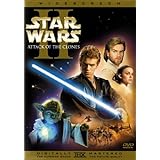 |
| Click Poster to Purchase DVD on Amazon.com |
Jump into Hyperspace: Move the Story Forward
Many new writers misinterpret the purpose of dialogue. They often use dialogue to tell the story, rather than use it to move the story forward. Audiences want to see what the characters want and what they'll do to get it, rather than hear them talk about it incessantly. While you may need some dialogue for exposition, especially if your story-world that does not directly correspond to the here-and-now, find ways to include how these facts and figures have a direct impact on the characters and their actions.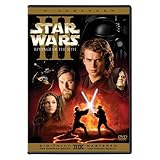 |
| Click Poster to Purchase DVD on Amazon.com |
Master and Apprentice: Define Character Relationships
You can also use dialogue to establish the relationships between characters. Your main character will inevitably use different language, tones and approaches with the other characters in relation to their roles in his life. An effective script would have the main character speak differently to his secret wife than to his mentor and friend.Your dialogue should also change as the relationships between those characters change. The protagonist would speak with more deference to a mentor as his student, then turn more familiar as the relationship evolves, then become more confrontational as the student's ambition destroys the relationship.
 |
| Click Poster to Purchase DVD on Amazon.com |
Do or Do Not: Focus on Character VOTE
In a previous post, we discussed the VOTE approach. This approach summarizes each character's Victories, Obstacles, Tactics and Energy. Each of these factors also determines how the characters will speak to each other. Every line of your dialogue should answer these questions wherever possible:- What does that character want out of that conversation?
- Which subjects will they avoid?
- Which conversational tactics will they use to reach their objectives?
- How will they show the energy that drives them toward that desired outcome?
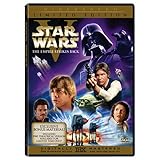 |
| Click Poster to Purchase DVD on Amazon.com |
Lightsabers and Turbolasers: Define the Character's Speech Patterns
Just as a Harvard professor will often employ a more extensive vocabulary and more precise grammar than a third-grade dropout, you must define the level of vocabulary and speech patterns that fit your characters. A virtuous character may refrain from profanity when calm and sober, but turn the air blue with curse words when upset or intoxicated. An educated character may be erudite and witty with colleagues, but revert to immature and crass humor with childhood friends. |
| Click Poster to Purchase DVD on Amazon.com |
Feel the Force: Use Minimal Dialogue
The key factor to remember about dialogue is “Show, Don't Tell”. If you have the option to tell the story through action rather than through dialogue, take the action option. Unlike novels, which require the writer to spell out every facet of the story in detail, screenplays serve as a blueprint for the story. The story itself unfolds in front of the audience on the screen; the images, sounds and action carry the story, which reduces the need for long stretches of dialogue. |
| Click Box to Purchase Blu-Ray Set on Amazon.com |
If you want your dialogue to ignite a producer's interest like a lightsaber blade, contact us at StoryIntoScreenplayBlog [at] gmail [dot] com. We can help you create memorable characters with sharp dialogue, unique phrasing and unforgettable voices. You can also follow us on Facebook and Twitter for the latest updates.
Good luck, and may the Force be with you!
Monday, April 28, 2014
Start Strong: Grab Readers With the First 5 Pages of Your Screenplay
Producers typically make only 500 feature films per year, and more of those every year come from established properties like TV shows, novels and comic books. Estimates for the number of spec screenplays written in the U.S. each year range from 50,000 to 100,000, so the odds are against your screenplay getting made into a feature film.
With so many producers receiving so many scripts, how do you get them to buy yours? Just like movie audiences can tell if a movie will be worth watching in the first five minutes, most screenplay readers determine if a screenplay is worth reading in the first three to five pages. You must answer five basic questions in the first five pages of your screenplay to keep the reader's interest.
The Gothic horror film We Are What We Are starts in an isolated Appalachian town during a heavy rainstorm. Screenwriter Nick Damici and writer/director Jim Mickle use the setting to establish the dark and oppressive mood for the entire story and to draw the viewer into the creepy world of the Parker family and its “traditions”.
Writer Ben Karlin and writer/director Stu Zicherman show the statuses of their main characters early in their script for the comedy A.C.O.D. The script opens with a married couple (Catherine O'Hara and Richard Jenkins) in a heated argument at their son Carter's (Adam Scott) eighth birthday party. The audience gets the immediate impression of Carter's unhappy childhood and his attempts to distance himself from this toxic family atmosphere.
In 47 Ronin, writers Chris Morgan and Hossein Amini use their first five pages to show the relationships between “half-breed” Kai (Keanu Reeves) and the other characters. They show his loyalty to his master, Lord Asano (Min Tanaka), his love for Asano's daughter Mika (Ko Shibasaki) and his rivalry with the samurai Oishii (Hiroyuki Sanada).
In the Arnold Schwarzenegger movie Sabotage, the action starts with Breacher (Schwarzenegger) and his team raiding a drug kingpin's mansion. Screenwriters David Ayer and Skip Woods establish the setting and the relationships between the team members amidst the gunfire and explosions while keeping the action moving.
The Jason Bateman comedy Bad Words starts with Guy Trilby (Bateman) sprinting out of an elementary school spelling bee with the trophy. Writer Andrew Dodge uses this opening to show how a ridiculous premise – a 40-year-old man competing in a kid's spelling bee – can make for a compelling story.
If you don't attract a reader's attention in the first five pages, whatever you do in the rest of the script doesn't matter. You can still save the best for last, but you must make a memorable first impression with your opening pages.
E-mail us at StoryIntoScreenplayBlog [at] gmail [dot] com to learn how to make your script stand out from the crowd. We specialize in developing ideas, characters and concepts into powerful and memorable stories. Also, remember to Like us on Facebook and follow us on Twitter to get the newest updates.
With so many producers receiving so many scripts, how do you get them to buy yours? Just like movie audiences can tell if a movie will be worth watching in the first five minutes, most screenplay readers determine if a screenplay is worth reading in the first three to five pages. You must answer five basic questions in the first five pages of your screenplay to keep the reader's interest.
 |
| Click Poster to Purchase Blu-Ray on Amazon.com |
Where Are We? Establish Your Setting
The opening image of your screenplay must show the reader where and when the story takes place. You can put this in the opening slugline or scene description, but you must build on it during the first page. Your setting includes more than just a date and a place, but also the social, political, religious and economic conditions the characters face at the beginning of the story.The Gothic horror film We Are What We Are starts in an isolated Appalachian town during a heavy rainstorm. Screenwriter Nick Damici and writer/director Jim Mickle use the setting to establish the dark and oppressive mood for the entire story and to draw the viewer into the creepy world of the Parker family and its “traditions”.
 |
| Click Poster to Purchase Blu-Ray on Amazon.com |
Who Are You People? Build Your Characters
The first five pages of your screenplay also serve as the reader's first glimpse into the lives of your main characters. By Page 5, the reader should know the protagonist, the antagonist and the major supporting characters. While you don't want to tell their entire life histories in the first five pages, you want the reader to understand who these people are and their roles in your story.Writer Ben Karlin and writer/director Stu Zicherman show the statuses of their main characters early in their script for the comedy A.C.O.D. The script opens with a married couple (Catherine O'Hara and Richard Jenkins) in a heated argument at their son Carter's (Adam Scott) eighth birthday party. The audience gets the immediate impression of Carter's unhappy childhood and his attempts to distance himself from this toxic family atmosphere.
 |
| Click Poster to Purchase Blu-Ray on Amazon.com |
How Do I Know You? Form The Characters' Relationships
Not only should the first five pages of your screenplay introduce the characters to the audience, these pages should also establish how the characters relate to each other. The points emphasized in last week's post on the importance of conflict in every scene are even more vital in the opening scenes. These initial scenes show the audience the core conflict that will drive the rest of the story.In 47 Ronin, writers Chris Morgan and Hossein Amini use their first five pages to show the relationships between “half-breed” Kai (Keanu Reeves) and the other characters. They show his loyalty to his master, Lord Asano (Min Tanaka), his love for Asano's daughter Mika (Ko Shibasaki) and his rivalry with the samurai Oishii (Hiroyuki Sanada).
 |
| Click Poster to Purchase Blu-Ray on Amazon.com |
What's Going On? Start the Action
When some writers take the time to establish the setting and characters in the first five pages, they often forget to start the action of the story. Readers will regard these pages as a pleasant introduction, but will quickly become impatient for more action. Your screenplay must move the story forward as soon as possible. You can start the action either immediately after introducing the characters and setting or allow the audience to learn about the characters as the action moves along.In the Arnold Schwarzenegger movie Sabotage, the action starts with Breacher (Schwarzenegger) and his team raiding a drug kingpin's mansion. Screenwriters David Ayer and Skip Woods establish the setting and the relationships between the team members amidst the gunfire and explosions while keeping the action moving.
 |
| Click Poster to Purchase Blu-Ray on Amazon.com |
Do I Want to Keep Reading? Engage the Reader
The goal of the first five pages of your screenplay is to make the reader want to get through the entire script. Producers and their script readers receive dozens of new scripts every day, so they don't have time to read a script that doesn't engage them until page 10 or 20. Your images, characters, conflicts and actions in the first five pages must be so compelling that the reader will not want to put your script down to answer the phone, eat lunch or go to the restroom.The Jason Bateman comedy Bad Words starts with Guy Trilby (Bateman) sprinting out of an elementary school spelling bee with the trophy. Writer Andrew Dodge uses this opening to show how a ridiculous premise – a 40-year-old man competing in a kid's spelling bee – can make for a compelling story.
If you don't attract a reader's attention in the first five pages, whatever you do in the rest of the script doesn't matter. You can still save the best for last, but you must make a memorable first impression with your opening pages.
E-mail us at StoryIntoScreenplayBlog [at] gmail [dot] com to learn how to make your script stand out from the crowd. We specialize in developing ideas, characters and concepts into powerful and memorable stories. Also, remember to Like us on Facebook and follow us on Twitter to get the newest updates.
Sunday, April 20, 2014
Screenwriting Tips: 5 Reasons Every Scene Must Have Conflict
 |
| From Wikimedia Commons |
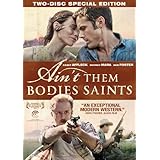 |
| Click Poster to Purchase Blu-Ray on Amazon |
Reason #5: Reveal Character Motivations
“Adversity does not build character, it reveals it,” the old motivational maxim goes. The more conflict your characters encounter in pursuit of their goals, the more chances you have to reveal what those goals are and how far they will go to obtain them. As you raise the stakes through the story and place the characters in more desperate situations, the adversity and conflicts they face in every scene will show the audience more about that character's qualities.In Ain’t Them Bodies Saints, writer/director David Lowery uses conflicts in nearly every scene to reveal the motivations of his main character, Bob Muldoon (Casey Affleck). The conflicts shows Bob's Victories, Obstacles, Tactics and Energy with minimal dialogue and enough energy to earn a Grand Jury Prize nomination at the Sundance Film Festival in 2013.
 |
| Click Poster to Purchase Blu-Ray on Amazon |
Reason #4: Establish Character Relationships
You can also use conflict in every scene to establish the relationships between characters. The conflict you show in these relationships also serve as momentum to carry each character through their story arcs and show how those relationships evolve through the course of the script.In Only God Forgives, writer/director Nicolas Winding Refn defines the character of Julian (Ryan Gosling) in his conflicts with his girlfriend Mai (Yayaying Rhatha Phongam), his mother Crystal (Kristin Scott Thomas) and police detective Chang (Vithaya Pansringarm).
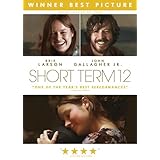 |
| Click Poster to Purchase DVD on Amazon |
Reason #3: Give Actors and Directors What They Need
When your script has conflict in every scene, the tasks involved in shooting each scene become much easier for the director and the actors. Directors will understand the objectives for each scene, while the actors will know how to play off each other and deliver better performances.In the indie film Short Term 12, writer/director Destin Daniel Cretton uses the conflicts between Grace (Brie Larson), her boyfriend/co-worker Mason (John Gallagher, Jr.), and her charges in a foster care transition home to build an affecting story and strong but subtle performances.
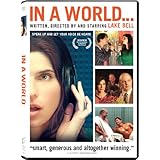 |
| Click Poster to Purchase DVD on Amazon |
Reason #2: Move the Story Forward
If there is an extreme example of a place where the saying “Time Is Money” is true, it's a film set. Every scene that does not carry the story forward constitutes a waste of time, money and effort on everyone involved. When you include conflict in every scene, you move the story toward its climax.In the comedy In A World..., writer/director Lake Bell puts her character Carol into conflict her father (Fred Melamed), his protege (Ken Marino), her sister (Alexandra Holden) and brother-in-law (Rob Corddry), and nearly everyone else in the voice-over industry, while still keeping the story moving in a brisk and fun 93 minutes.
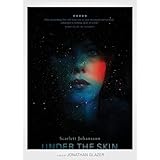 |
| Click Poster to Purchase DVD on Amazon |
Reason #1: Give Audiences Reasons To Watch
In today's world of 500 cable TV channels, viral videos and streaming media, audiences have never had more choices. The best way to make them choose your story is to give them something to watch in every scene. If the story drags at any point, audiences will change to another channel, click another link or tweet a negative review.The recent Scarlett Johannson film Under The Skin, with screenplay by Walter Campbell and directed by Jonathan Glazer, serves as a prime example of how NOT to maintain conflict in every scene, as it drags in too many places and cuts away quickly in others, leaving audiences confused, bored and frustrated.
If you haven't started writing your screenplay yet, you should attempt a scene-by-scene outline and determine the conflict in each scene. If you have a completed draft, read each scene, one at a time, and find the conflict. If the scene does not contain conflict, either find a way to establish conflict in that scene or cut it out.
.jpg/320px-Fight!!_(4718093571).jpg) |
| From Wikimedia Commons |
If you want to learn how to bring conflict and tension your script, contact us at StoryIntoScreenplayBlog [at] gmail [dot] com. We specialize in developing ideas, characters and concepts into powerful and memorable stories. Also, remember to Like us on Facebook and follow us on Twitter to get the newest updates.
Subscribe to:
Posts (Atom)























